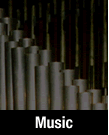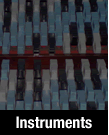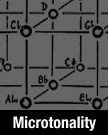
|
Alan Ridout
The English composer Alan Ridout was born in 1934 in West Wickham (Kent). He
studied at the Royal College of Music in London with Gordon Jacob and Herbert
Howells and took further lessons with Peter Fricker and Michael Tippett. In
1957 he studied in the Netherlands with Henk
Badings, who brought him into contact with Adriaan
Fokker and the 31-tone system. He settled in Canterbury, the seat of the de
Anglican church, a not unimportant fact given the considerable number of his
church compositions, both for choir as for organ.
31-Tone compositionsThe composition Music for 31-tone organ was completed on 13 February 1960 and dedicated to Prof. Fokker. The composition consists of eight parts which have each their own musical character. For this it is possible to perform the parts as loose character pieces. Because each part is moreover written in a different Euler genus, this composition may serve as a demonstration of the tuning possibilities of the Fokker organ. Ridout's Trio for strings in 31-tone tuning was composed in 1961. The work consists of three parts, all based on the Euler-Fokker genera. In the first part Chants and the third part Variations, the genus [33377] (D+,G-) is employed:
Bb- 3 F- 3 C- 3 G-
7 7 7 7
C 3 G 3 D 3 A
7 7 7 7
D+ 3 A+ 3 E+ 3 B+
An Euler-Fokker genus is made by stacking basic intervals and thus forming
a network of tones. The intervals which are used are the fundamental intervals
the just fifth, (frequency ratio 2:3, thereby symbolised by a '3'),
the major third (frequency ratio 4:5, or '5') and the harmonic seventh
(frequency ratio 4:7 or '7', clearly smaller than the normal minor seventh
and therefore not present in the ordinary 12-tone system). These intervals are
represented in the 31-tone system by 18 steps (the fifth), 10 steps (the
major third) and 25 steps (harmonic seventh).
F 5 A 5 C#
7 7 7
G+ 5 Cb 5 Eb
7 7 7
A# 5 D- 5 F+
7 7 7
C 5 E 5 G#
In this network the horizontal connections are major thirds, and the vertical ones harmonic sevenths. (Cb is in the 31-tone system enharmonically equivalent to B+, A# to Bb- and Eb to D#+.) The genus [3557] (G,G+) is constructed similarly to the former, with the provision that it's a three-dimensional system, with three generating intervals.
|








